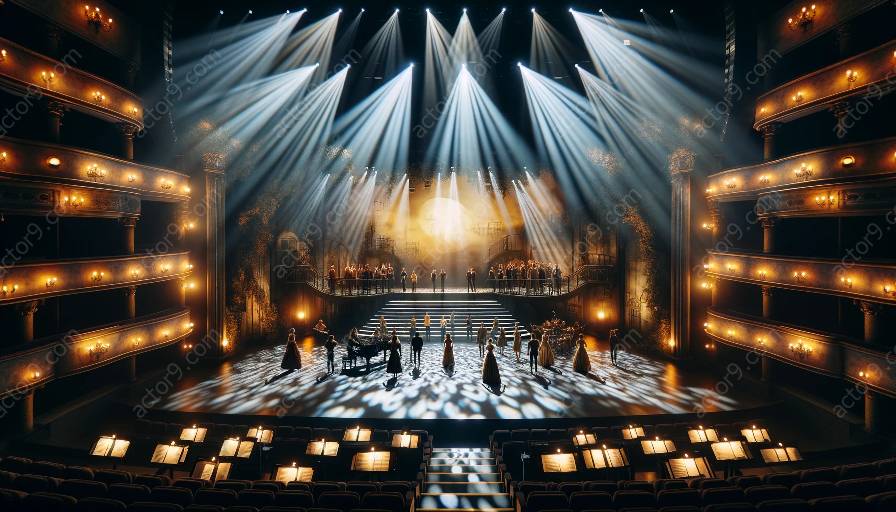Lighting design forms an integral part of the enchanting world of musical theatre. It is a creative and technical discipline that enhances the visual storytelling, sets the mood, and guides the audience's attention. In this comprehensive guide, we will delve into the fundamentals of lighting design in the context of musical theatre, exploring the interplay between light and emotion, the techniques employed to create captivating visual spectacles, and the pivotal role it plays in bringing the stage to life.
The Role of Lighting Design in Musical Theatre
Lighting design in musical theatre serves as a powerful tool for evoking emotions and creating atmospheres that complement the narrative and music. It not only illuminates the performers but also shapes the overall ambiance, providing depth, texture, and focus. From setting the scene and time of day to highlighting emotions and intensifying dramatic moments, lighting design has the ability to immerse the audience in the unfolding story.
Key Components and Principles
Key elements in lighting design include color, intensity, distribution, movement, and texture. Understanding the principles of these components is essential for the effective execution of lighting design in musical theatre. Utilizing color psychology, light angles, and dynamic cues can transform a scene, transporting the audience into different worlds and moods.
Techniques and Tools
Lighting designers employ a range of techniques and tools to create mesmerizing stage effects. From spotlights and floodlights to LED fixtures and moving lights, the arsenal of equipment is vast. Moreover, the integration of computerized lighting control systems allows for seamless coordination of lighting cues, adding an extra layer of dynamism to the visual experience.
Considerations and Collaboration
Collaboration lies at the heart of lighting design in musical theatre. Working closely with directors, set designers, and choreographers, lighting designers ensure that the lighting seamlessly integrates with the overall production. Considering factors such as sightlines, costume design, and the utilization of practicals (on-stage light sources), they harmonize lighting with other creative elements, amplifying the impact of the performance.
The Evolution of Lighting Design
Over time, advances in technology have revolutionized lighting design in musical theatre. From the early use of gaslights and candles to the advent of electric lamps and sophisticated LED systems, the evolution of lighting technology has expanded the creative possibilities for designers, enabling them to craft immersive and awe-inspiring visual landscapes.
Dreaming in Light
Lighting design in musical theatre is a masterful art form that requires a deep understanding of storytelling, visual composition, and the interplay of light and shadow. As audiences are transported to worlds both familiar and fantastical, the magic of lighting design weaves an enchanting tapestry, illuminating the emotions and aspirations of the human experience.




































